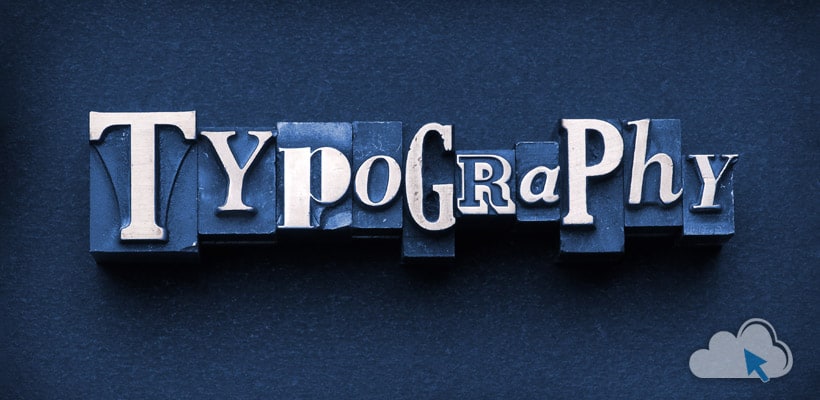Tube Rank: Your Guide to Video Success
Discover tips and insights for optimizing your video presence.
Type Right or Get Left: Typography Tips for the Web
Unlock the secrets of stunning web typography! Discover essential tips to captivate your audience and elevate your designs today.
The Importance of Typography in Web Design: Why It Matters
Typography plays a crucial role in web design, as it directly affects user experience and site aesthetics. The choice of fonts, their sizes, and the spacing between text elements can make or break the readability of your content. When users visit your site, the first thing they notice is the overall look and feel, and typography contributes significantly to this first impression. A well-organized typographic hierarchy allows visitors to easily navigate through the information, guiding their eye to important sections and enhancing the overall flow of the content.
Moreover, good typography enhances branding and establishes a strong visual identity. Different fonts and styles convey different emotions and messages, making it essential to choose typography that aligns with your brand's voice. For instance, a modern sans-serif font may suggest a fresh and contemporary feel, while a classic serif font can evoke tradition and reliability. Ultimately, by prioritizing typography in your web design, you create a more engaging and effective user experience, which can lead to increased traffic and higher conversion rates.

10 Typography Hacks to Improve Your Website's Readability
Typography is a critical factor in enhancing your website's readability. One of the first hacks to consider is using a font hierarchy that differentiates headings from body text. This creates a visual structure that guides readers through your content seamlessly. Additionally, maintaining a sufficient contrast between the text and background colors ensures that your content is easily legible. A good rule of thumb is to aim for a contrast ratio of at least 4.5:1 for normal text. Finally, consider using a line height of 1.5x the font size to provide ample white space, making it easier for users to scan your text.
Another essential hack is to limit the number of different fonts used on your website. Sticking to two or three typefaces can create a more cohesive look, as too many fonts can overwhelm readers and detract from your message. Furthermore, using responsive typography ensures that your text looks great on devices of all sizes. Implementing relative units like em or rem allows the text to scale appropriately. Lastly, remember to utilize bullet points or numbered lists when presenting information. This not only breaks up large chunks of text but also makes key points more digestible and visually appealing.
How to Choose the Perfect Font Pairing for Your Website
Choosing the perfect font pairing for your website is essential for creating a cohesive visual identity and enhancing user experience. Start by considering the mood and purpose of your website. For instance, a playful blog might benefit from a combination of a whimsical script font with a clean sans-serif, while a corporate site should opt for more traditional pairings like a serif font complemented by a sans-serif counterpart. Remember to ensure legibility across different devices, as readability is key to keeping visitors engaged.
Once you have a general direction, test your combinations using design tools such as Adobe Fonts or Google Fonts to visualize how they interact with one another. Aim to choose a maximum of two to three fonts to avoid clutter, utilizing different weights and styles to create hierarchy. As a rule of thumb: one font for headings, another for body text, and possibly a third for accents. Take your time in selecting the right font pairing, as it can significantly affect the perception of your brand and the overall design of your website.